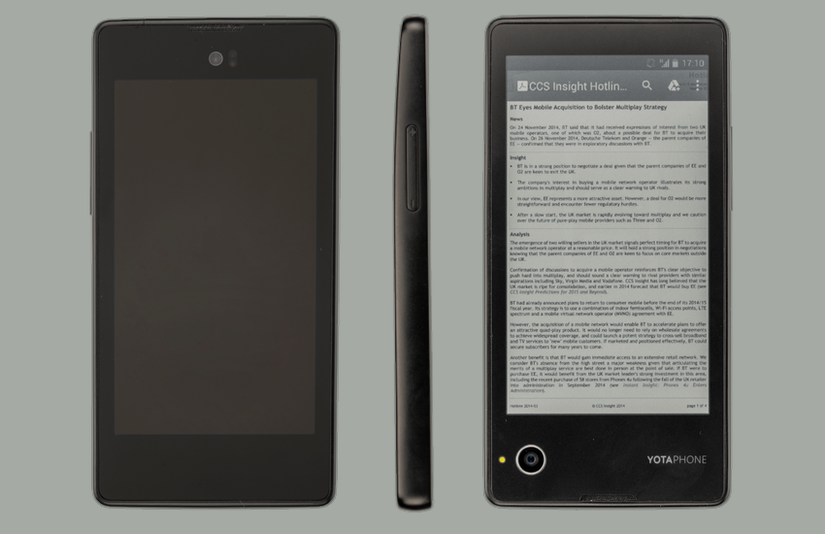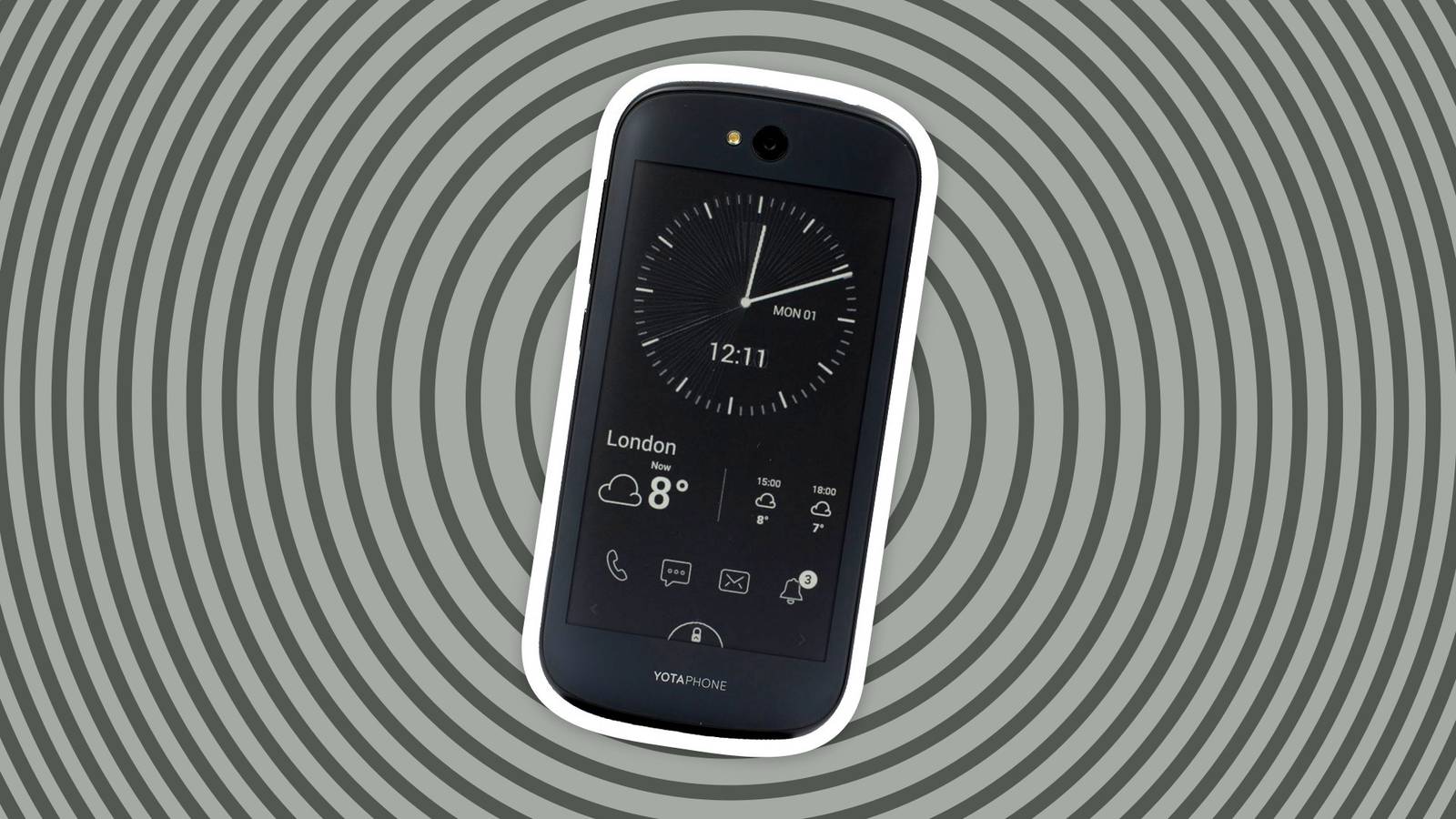Jump Links
What Made This Phone So Weird?
Imagine if you could still see the time, your last text, or keep reading your book when your phone’s battery died. What if your phone had a second, always-on screen just for that? The YotaPhone was that weird phone.
You might think that dual-screen phones are a modern concept, something only recently cooked up by giants like Samsung. But you’d be wrong. Back in early 2010s, a Russian company called Yota Devices decided phones should have two screens for the price of one slab.
A Short-Lived Cool Idea
Yota Devices had been around since 2011, but most people never heard of them until they showed off the YotaPhone at Mobile World Congress in February 2013. The original YotaPhone had a standard 4.3-inch LCD display on the front, but then a secondary e-ink display on the back.

YotaPhone 1Credit: Mobile Phone Museum
This e-ink display was where all the interesting stuff happened. Just like a Kindle, it used almost zero power to display an image. Because it was always on, you could glance at notifications, the weather, a boarding pass, or a quote without waking the main screen. Yota even let you “mirror” your main Android screen onto the e-ink display, but it was not a touchscreen.
In 2014, the YotaPhone 2 was released. This model was much more polished, and the e-ink display was fully touch-sensitive. This meant it could be used as an actual e-ink phone, not just a digital dashboard of sorts. The Yotaphone 2 was what everyone wanted the original to be.
Ultimately, the YotaPhone couldn’t live on potential alone. Both models combined only sold around 75,00 units. The concept was intriguing, but not enough to keep the lights on. The company ran into major financial trouble and, by 2019, was declared bankrupt.
What Made This Phone So Weird?
Obviously, the e-ink display was always the star of the show. Even the original YotaPhone without a touch-sensitive e-ink panel was a neat idea. We wake our phones countless times throughout the day just to check the time, weather, or the latest notification. The e-ink panel presented an effortless and power-saving way to do it.
But there were some clear drawbacks once you actually had the phone. The e-ink display on the YotaPhone 2 was painfully slow. Scrolling was choppy, and the refresh rate often felt like an eternity. If you tried to use the mirrored display for anything active, you were met with “ghosting,” where remnants of the previous image lingered like a smudge.
There was also the question of which way to put the phone down? If you put the “back” down, like a normal phone, you hide the cool secondary display. But if you left the e-ink side facing up, you ran the risk of scratching the main display. It was also possible to accidentally unlock or interfere with the e-ink screen when holding the phone.
The YotaPhone was an example of something that looked cool and sounded like a great idea, but in actual day-to-day use, it was a bit awkward. The main problem may have been that it was trying to be two things at once. We now have devices like the Boox Palma, which is simply a phone with an e-ink display. There’s also the Minimal Phone, which tries to use e-ink’s limitations as a selling point. None of them is as weird as a two-sided phone, but that’s why we loved the YotaPhone.
Sources: Wikipedia, The Verge, Mobile Phone Museum

